Animal Tarot
Woodblock and stencil Animal Tarot cards, probably of Swiss origin, 2nd half 18th century.
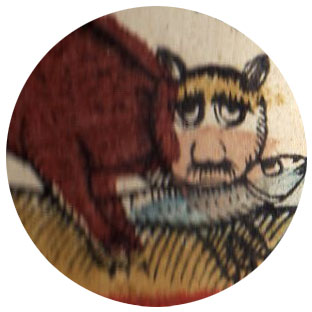
Bavarian Animal Tarot
Tarots with French suit signs started appearing in around 1750, notably by Andreas Göbl of Munich. Subjects depicted on the trump cards varied, but during the 18th century there was a preference for pictures of animals or hunting scenes. The number cards were often reduced so that packs consisted of only 54 cards. Towards the end of the century mythological and literary subjects started to appear as well. The Fool was usually depicted as a harlequin, often dancing and playing a musical instrument.
As they have no titles or legends, the images on the trump cards must speak for themselves. Sometimes they appear to depict fables or folk sayings, perhaps even suggesting a moralising interpretation. In trump XIII we see a person being devoured by a crocodile: this is indeed unfortunate! On trump XVII a cat has caught a fish...
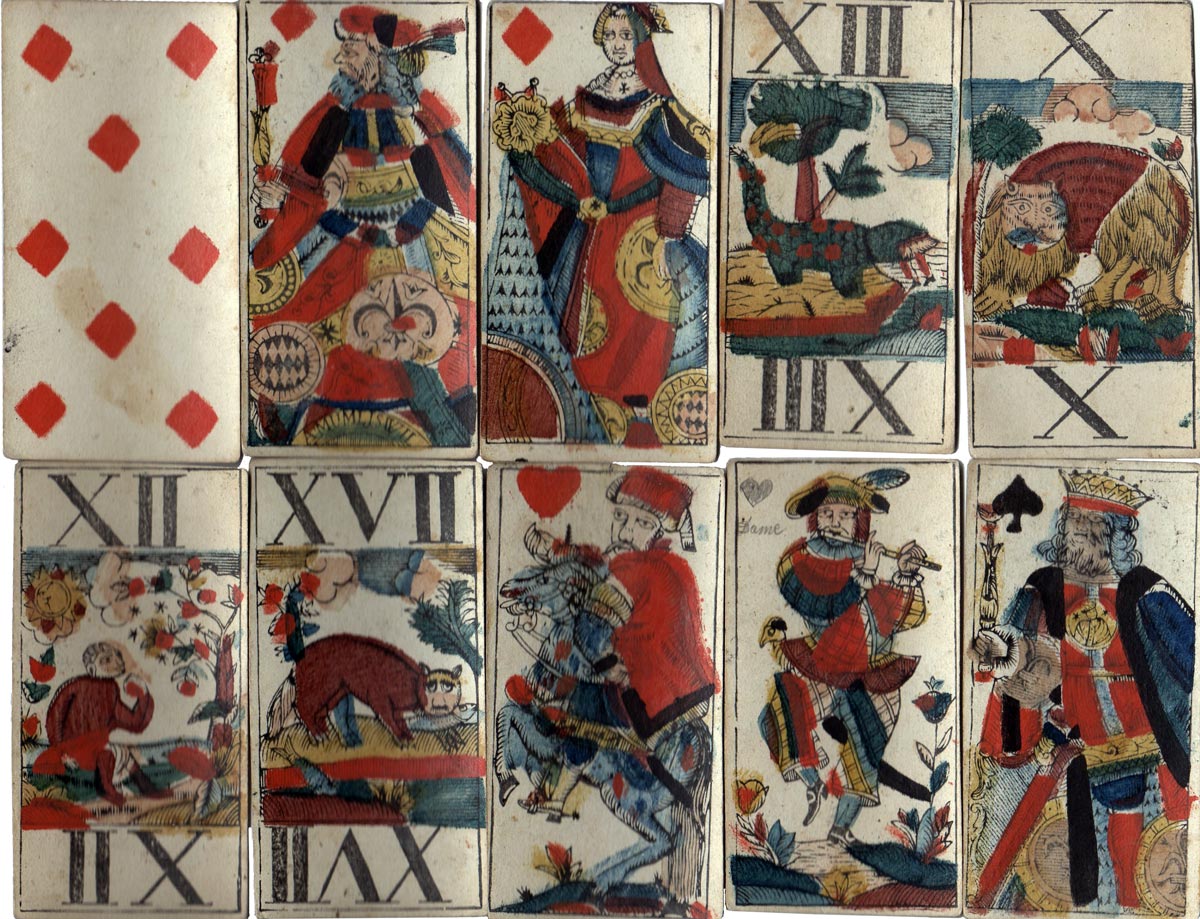
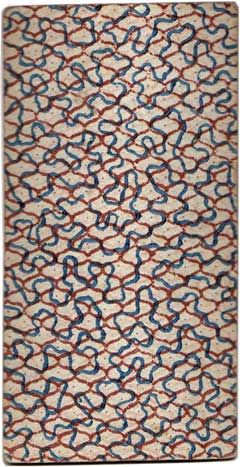
Above: woodblock and stencil Animal Tarot cards, probably of Swiss origin, 2nd half 18th century. The city of origin seems to be indicated at the bottom of the King of Diamonds (A Mumijswii) but it is a real challenge to decipher. This is the most usual form of Bavarian Tarot, with panels at the top and bottom of the trump cards containing their value in Roman numerals. Lozenges of the Bavarian arms can be seen on the round shields of the King and Queen of Diamonds. Other decorative features on the court cards suggest a derivation from the old Paris pattern. The 'Fool' card in this example has been reassigned as the Queen of Hearts by a previous owner. Images courtesy Frederic C. Detwiller.
See also: Danish Animal Tarok cards by Jean Friedrich Mayer (1752-1783) • Jacob Holmblad Animal Tarot c.1835
FURTHER READING
Mann, Sylvia: All Cards on the Table, Jonas Verlag/Deutsches Spielkarten-Museum, Leinfelden-Echterdingen, 1990
Note from FREDERIC DETWILLER - additional background history
These cards were owned by my 3 x great grandfather Jacob Detwiller of Langenbruck Switzerland near Basel. Since the town of Mümliswil is in Canton Solothurn next door to Canton Basel, it seems likely that was where they may have been printed and where they may have been acquired with inscription in French: "Å MUMLISWIL".
Detwillers have lived in Langenbruck since at least the 16th century. The cards were found by my Gr. Grandfather J.J. Detwiller and my grandfather CH Detwiller in a silver cigar(?) case along with some brass dice in his hunting lodge at Neunbrunnen (Nine Springs) when Jacob died 1878. The house is still extant as a Gasthof (see old view: www.gast-hof-spittel.ch/►
We also inherited a couple of Swiss-German 17th-18th century hunting swords (and the bronze stag hooks from which they hung in the dining room at the Neunbrunnen lodge. The hunting swords (and perhaps the tarot cards) probably originally belonged to 4 x Gr. Grandfather Heinrich Dettwiler (1760-1814, or his father of same name b.1718) of Langenbruck. The first to settle in Langenbruck was Jacob Dätwyler (old spelling) of Saget near Zofingen in 1582.
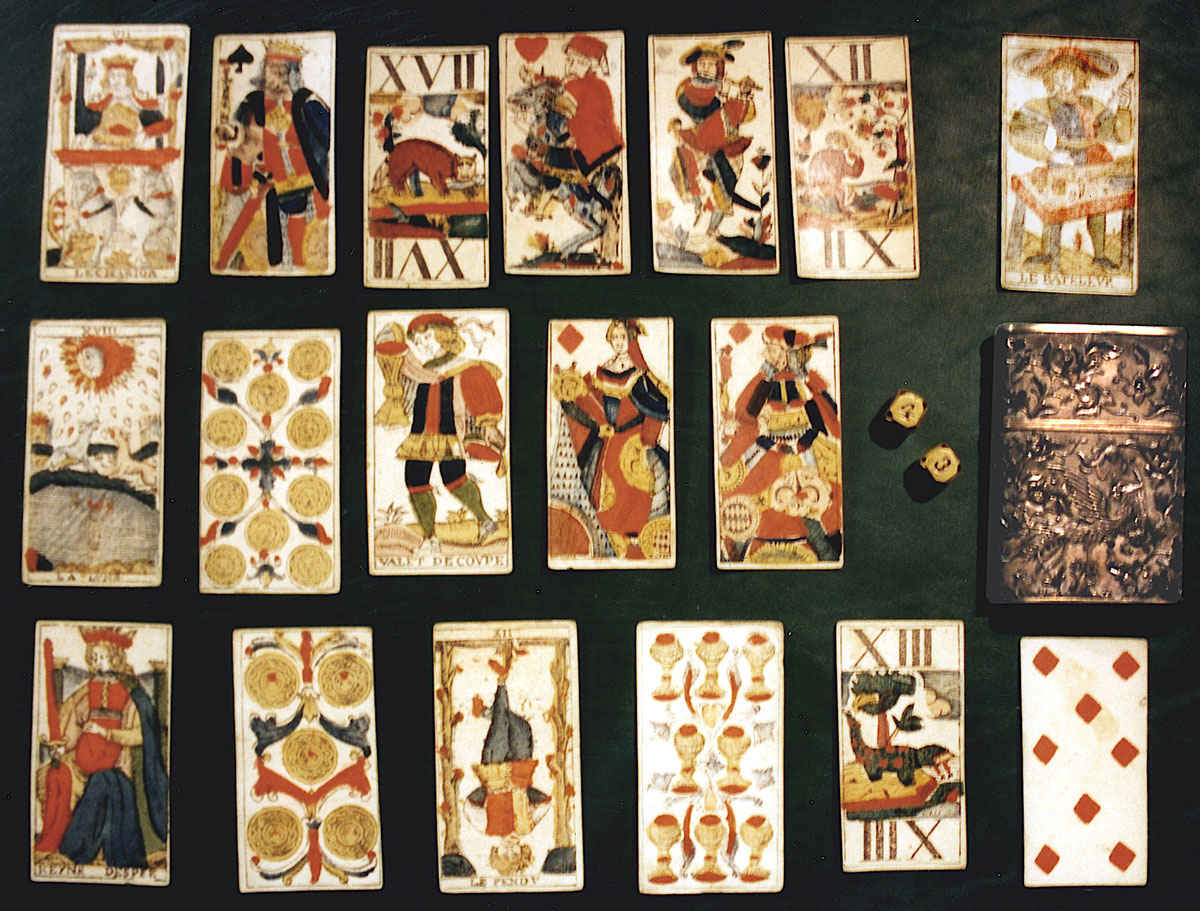
Thanks again to Marc Flöter for your information in the comment below - F.D.
By Simon Wintle
Spain • Member since February 01, 1996 • Contact
I am the founder of The World of Playing Cards (est. 1996), a website dedicated to the history, artistry and cultural significance of playing cards and tarot. Over the years I have researched various areas of the subject, acquired and traded collections and contributed as a committee member of the IPCS and graphics editor of The Playing-Card journal. Having lived in Chile, England, Wales, and now Spain, these experiences have shaped my work and passion for playing cards. Amongst my achievements is producing a limited-edition replica of a 17th-century English pack using woodblocks and stencils—a labour of love. Today, the World of Playing Cards is a global collaborative project, with my son Adam serving as the technical driving force behind its development. His innovative efforts have helped shape the site into the thriving hub it is today. You are warmly invited to become a contributor and share your enthusiasm.

Related Articles
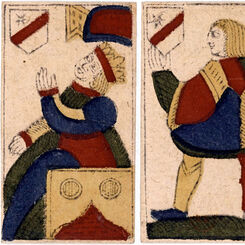
Swiss playing cards by Iehan Hemau
17th century Swiss-suited playing cards by Iehan Hemau of Épinal.
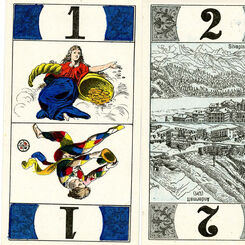
Swiss Scenic Tarock
Scenic Tarock deck produced by Fabrique de Cartes J. Müller & Cie (Schaffhouse), Suisse.
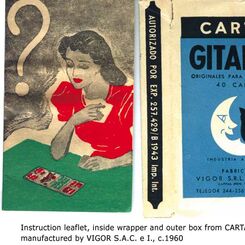
Cartas Gitanas
The designs of these fortune-telling cards are largely taken from nineteenth century Austrian "Rural...
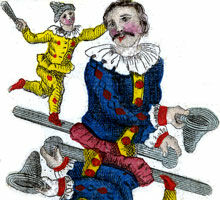
Holmblad Animal Tarot
Instead of the old emblematic designs, the trump cards show illustrations of animals, which could po...
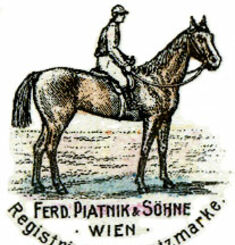
Piatnik Tarock
Deck of "Industrie und Glück" or "Rural Scenes" tarock cards manufactured by Ferd Piatnik & Söhne, V...
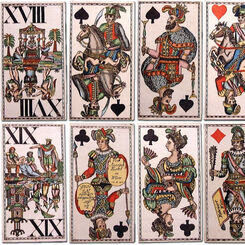
Estel Tarok
J. Estel Tarok, 1820.
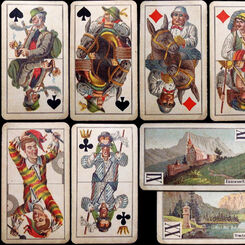
Pittner Tarok
Ferd Pittner, Tarok Cards
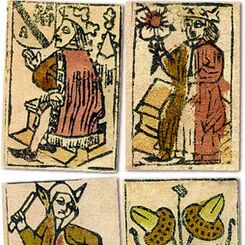
Swiss Playing Cards
The Swiss national suit system of shields, acorns, hawk bells and flowers emerged sometime during th...
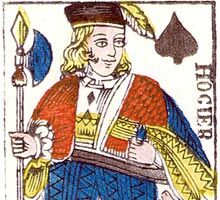
Swiss French Suited Playing Cards, c.1840
French-suited playing-cards in the Paris pattern appeared in Switzerland around the end of the sixte...
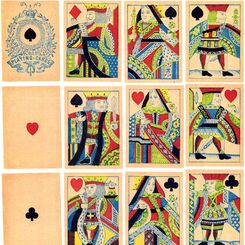
Swiss Mogul Cards, 1880-1890
English type 'Mogul' playing cards manufactured in Switzerland by John Müller for export to India, c...
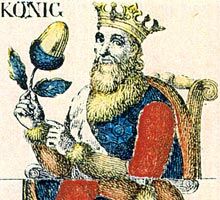
David Hurter, Schaffhausen
David Hurter built up a playing card business in Schaffhausen during the 18th century.
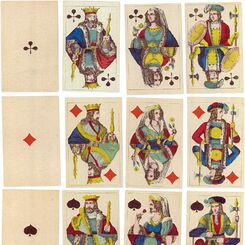
Müller (Diessenhofen), c.1840-50.
Playing Cards made by J. Müller, Diessenhofen, c.1840-50 with court cards coloured differently ...
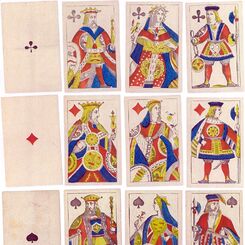
Swiss Piquet Playing Cards, c.1850-60
Piquet playing-cards made by J. Müller, Diessenhofen, c.1850-60. The full-length court cards are fol...
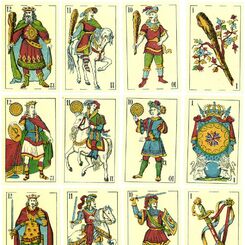
Swiss Spanish-Suited Cards, c.1875
Spanish-suited playing cards manufactured by J. Müller for export to Latin American countries, c.187...
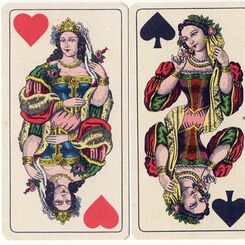
Adametz, Vienna
Cards from a 54-card "Austrian Tarock" or "Industrie und Glück Tarock" pack made by Franz Adametz of...
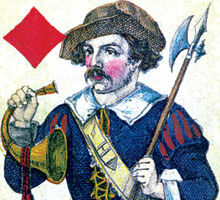
Danish Tarok Cards - Holmblad, c.1850
The traditional animal images on tarok decks are here substituted by images of buildings from Copenh...
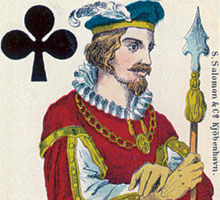
Danish Tarok Cards - Salomon & Co., c.1906
Danish Tarok cards published by S. Salomon & Co., Kjøbenhavn, c.1906.

Danish playing cards - Tarock trumps
Two versions of trump no.15 depicting the Thorvaldsen Museum.

Animal Tarok by Jean Friedrich Mayer (1752-1783)
Animal Tarok by Jean Friedrich Mayer (1752-1783).

Playing cards in the Upper Rhine region
Documentary evidence suggests that card playing established itself in Italy in 1376, and then spread...
Most Popular
Our top articles from the past 60 days






















